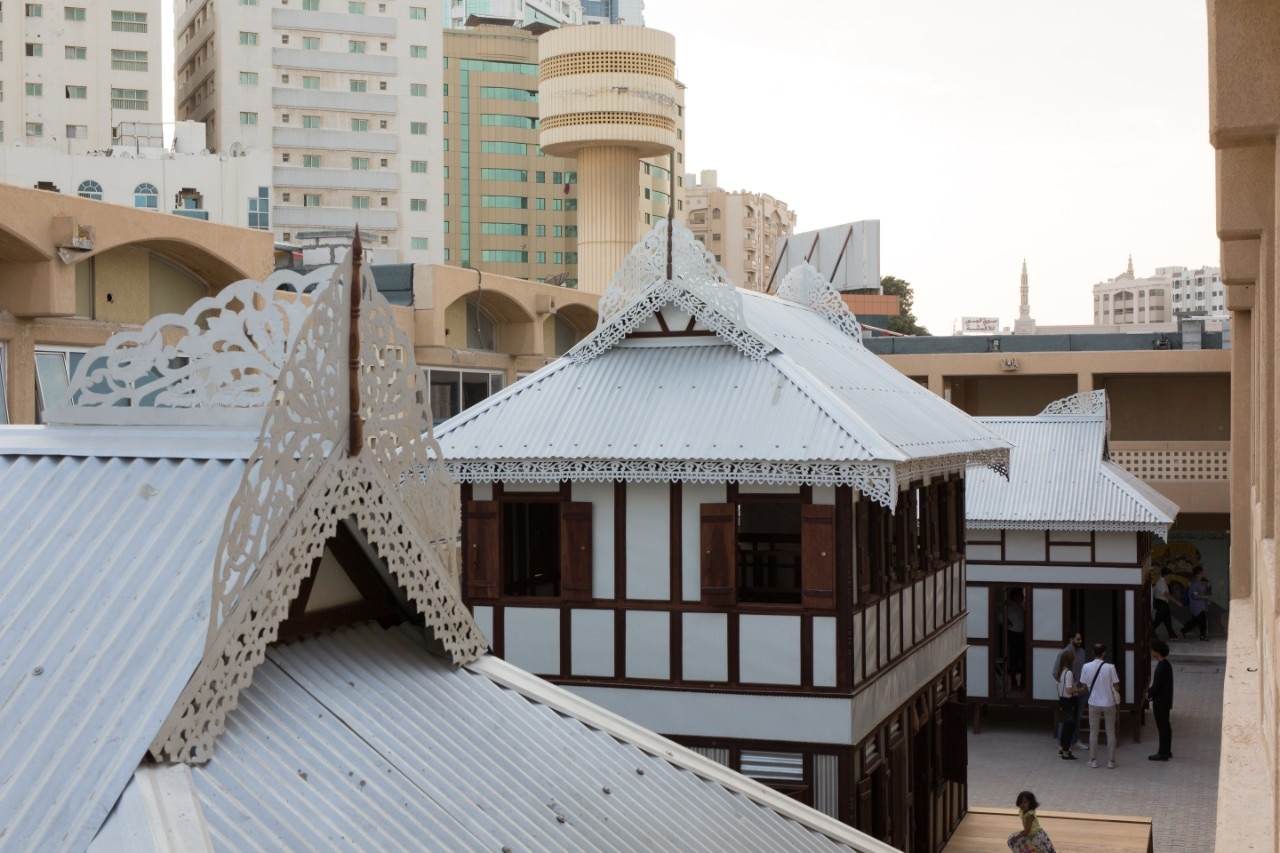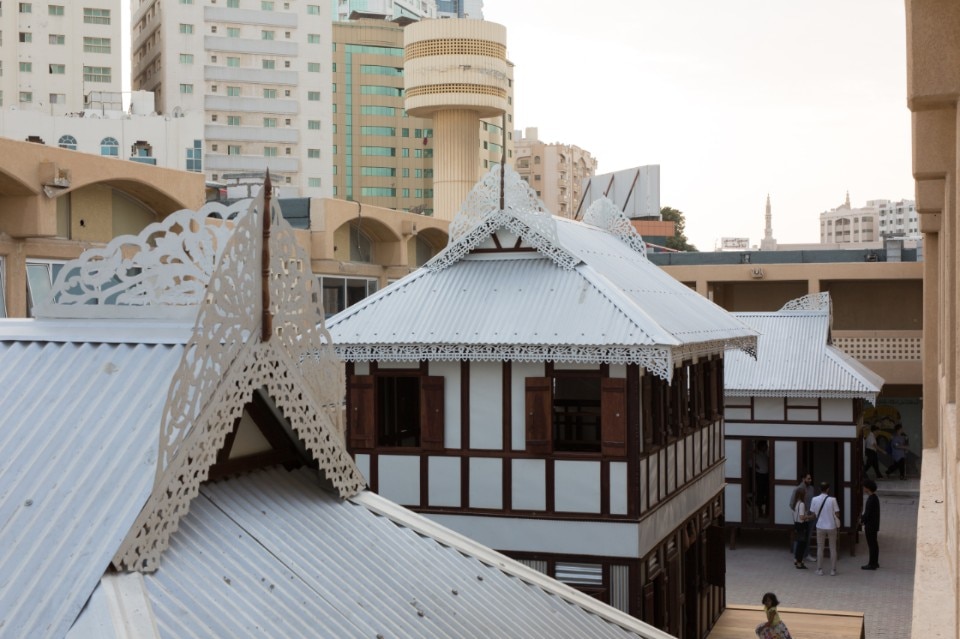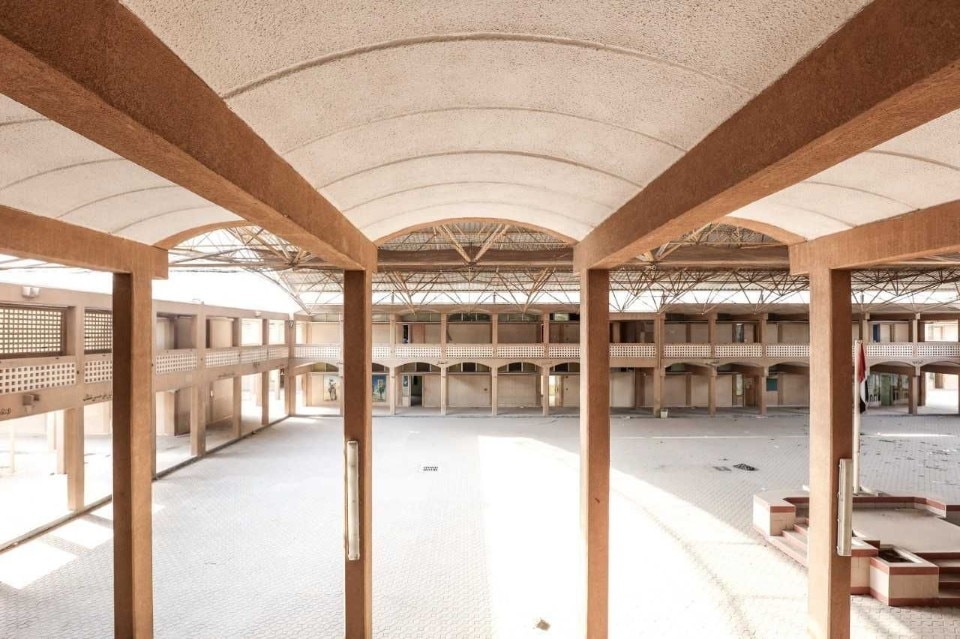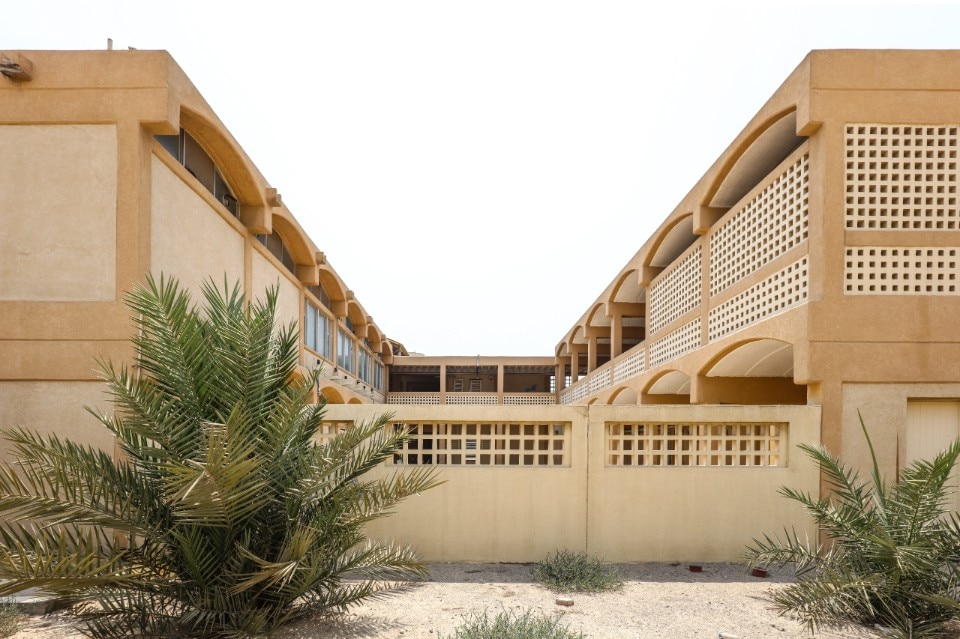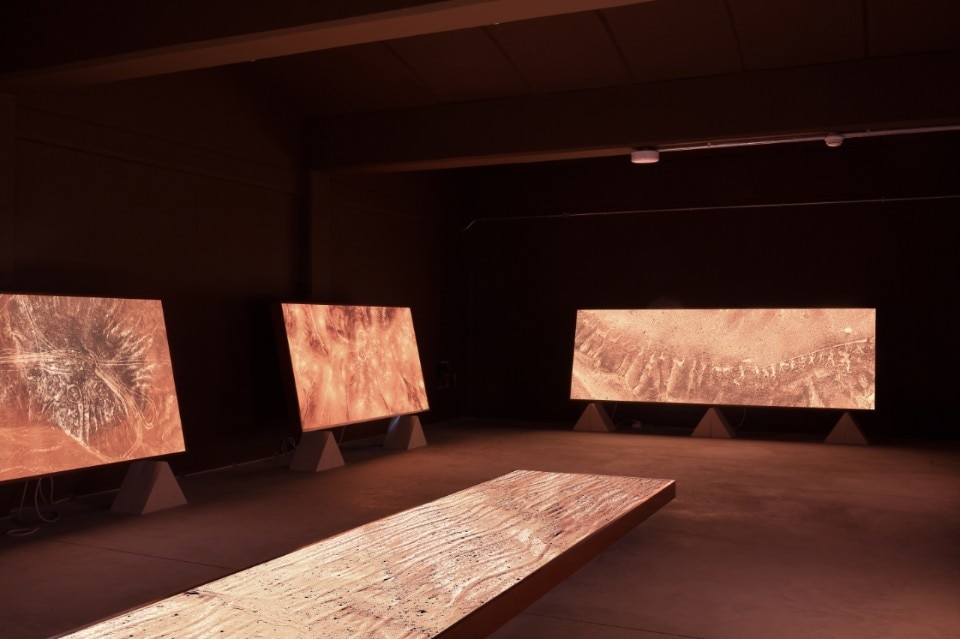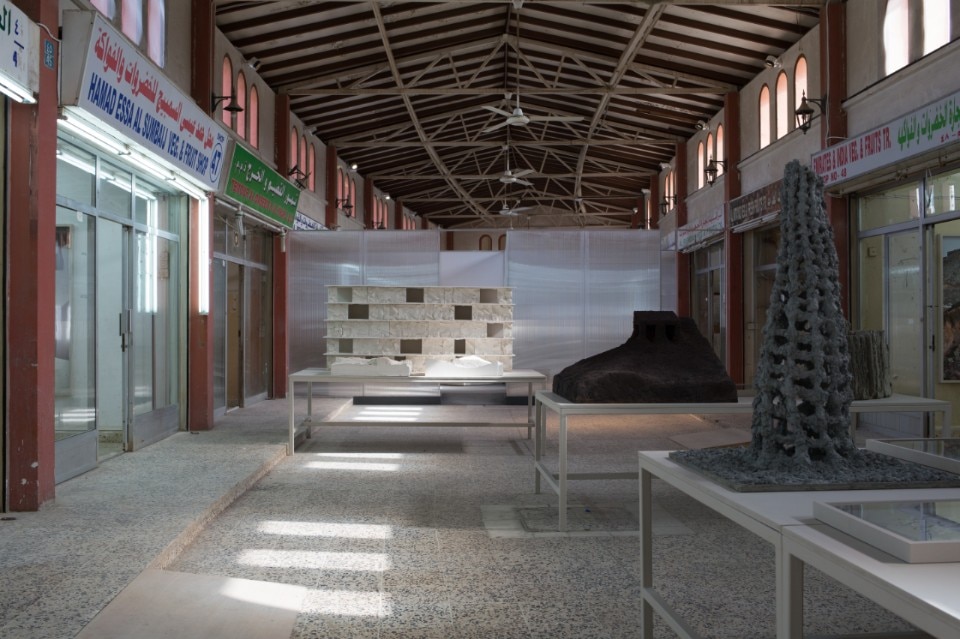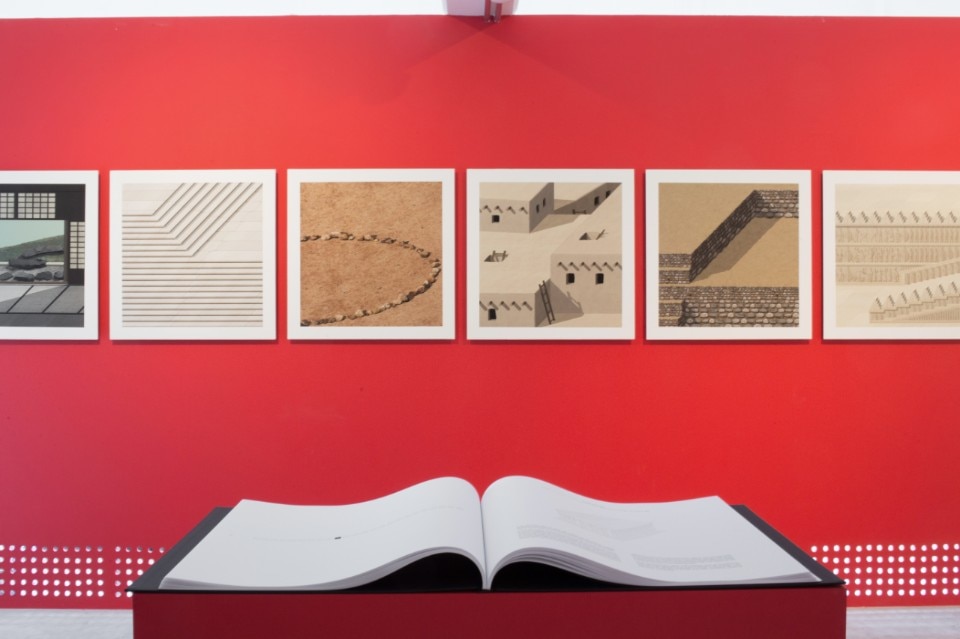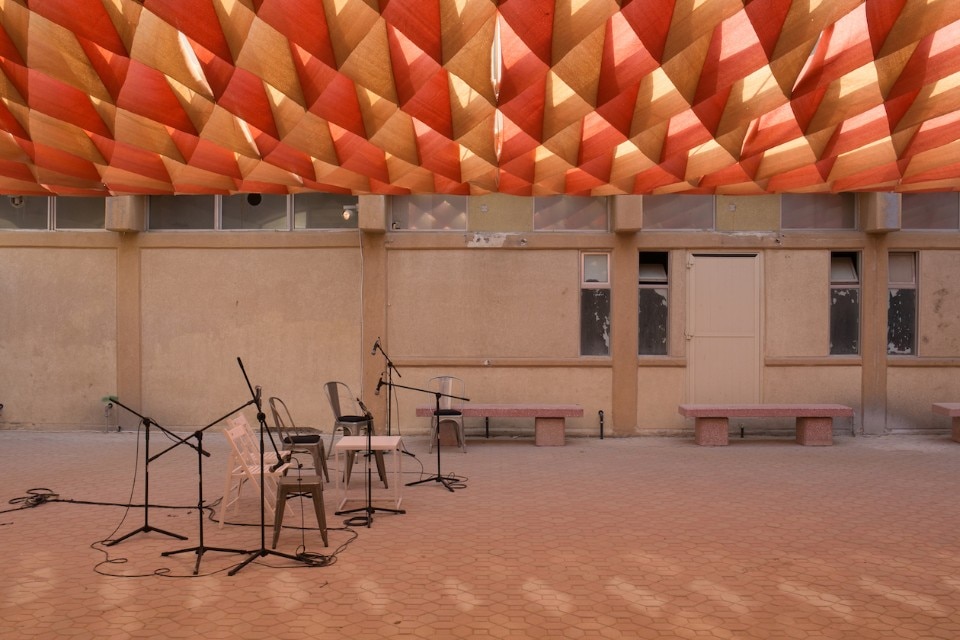“Sharjah has been developing as a real cultural node in a South-to-south network – a network of cultural dialogue that doesn’t pass through London, doesn’t need to pass through New York, to be legitimised. For me that was really empowering,” says Lahoud at the opening of the inaugural Sharjah Architecture Triennial. It is the first major platform dedicated to architecture in the Middle East, and draws on almost 30 architecture practices to respond to the theme “Rights of Future Generations”. But while it is the first of it's kind, Lahoud is keen to point out: “It’s not a lag like we’re behind, it’s that the archives in this part of the world were stolen or destroyed, the institutions were thwarted, governments were supported that didn’t have any kind of investment in supporting public institutions. It’s the legacy of colonialism.”
Exhibits are split across two previously disused 1970-80s buildings – the Al-Qasimiyah primary school and Al Jubail Souq. This era of architecture has "zero value" in Sharjah says Lahoud, but their conversion is part of a wider move by triennial chair Sheika Hoor Al Qasimi (who also heads up the Sharjah Art Foundation and the city’s well-established art biennial) to preserve this layer of the city's history for the future. “Seeing some of the valuable modernist architecture in the city now beginning to disappear, I took it upon myself to try and identify various buildings across the Emirate of Sharjah that could be saved from demolition, and find alternative uses that would serve the communities around them,” she says. Following the close of the triennial in February 2020 the school will go on to serve as a headquarters for the team, while there are plans to convert the fruit and vegetable market into an arts institution. “Both the fruit and vegetable market and the school building are so emotionally resonent for local people because they were educated in these schools, and they went shopping for the fruit vegetables in the old market,” says Lahoud. "These two buildings which are so modest now when you think about the kinds of architecture that's taking place here, but spatially they're absolutely wonderful spaces."
Old shops and walkways at the market have been taken over with installations by eight studios, while at the school classrooms and courtyards are host to twenty-one participants. From climate change to land rights, the exhibits look at just what is been inherited by this generation and what's being left for the next. “We are leaving the planet in a worse state than we found it in,” says Lahoud. “We have a responsibility to respond to this crisis.”
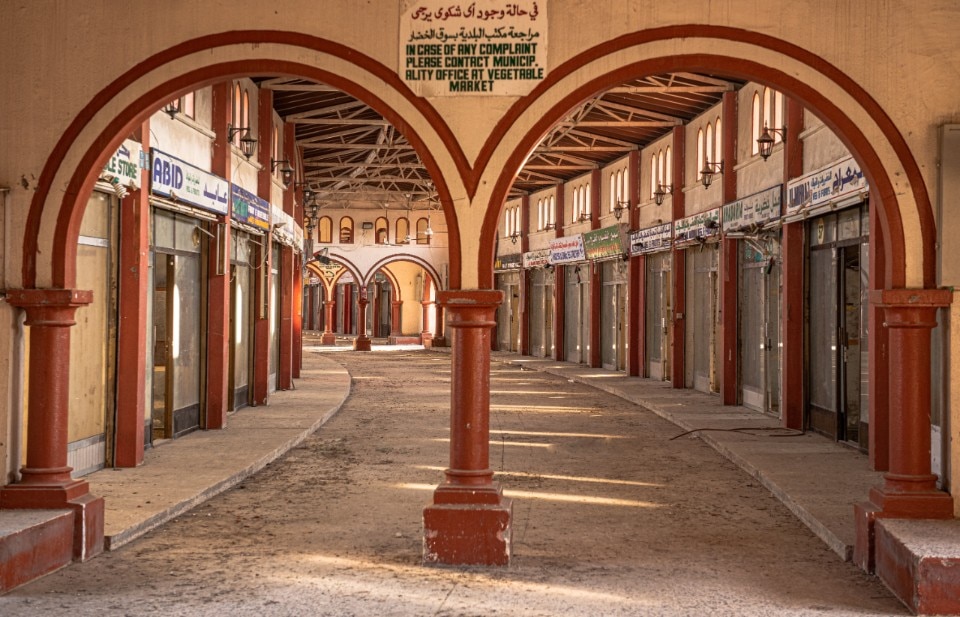
An installation of three prefabricated houses by Bangladeshi architect Marina Tabassum (pictured header) looks at the challenges of life on the Ganges Delta, where three rivers converge and regularly and severely flood the area. The houses, which Tabassum has erected in one of the school’s courtyards, were bought as a kit of parts from a local market. Their wooden frames and decorative metal roofs are designed to be easily dismantled and moved away from the waters edge in a practical response to the challenge of “Inheriting Wetness” – the name Tabassum has given the installation – but the concept of land ownership in the region is being constantly tested by the uncertainty of climate change. With land submerged and revealed by the movement of water, memories of place rely on being able to pass on knowledge passed down through families. “It was a kind of emblem of all the things that we were really interested in, because it combines environmental condition with the social practice with an architectural form,” says Lahoud.
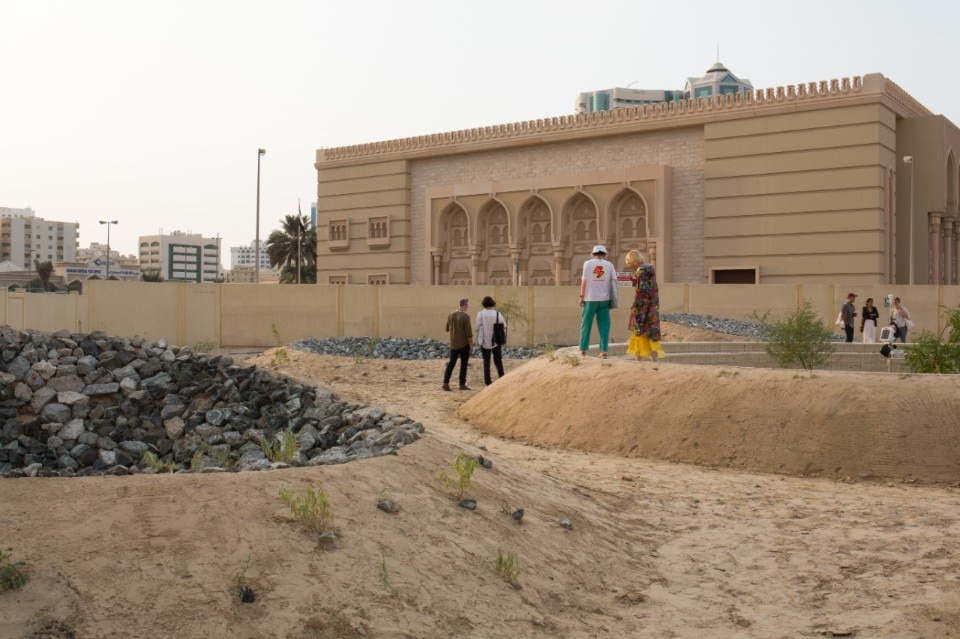
In a city where lanes of traffic are verged in verdant lawns at odds with the desert climate, an installation by London studios Cooking Sections and AKT II is a welcome challenge to preconceptions of what indigenous planting can provide. A series of stone-lined craters create microclimates for forty species of desert plant, reducing the need for artificial irrigation. Some of the planting from the installation called Becoming Xerophile will be served in a cafe at the school that will be open throughout the triennial. Also looking at rejection of natural conditions, Bangkok practice all(zone) has installed a woven sun shade above one of the school courtyards as an alternatively to the heavily air-conditioned spaces prevailent throughout the UAE. It offers a transitory space between the heat of the outdoors and artificially cooled interiors.
A dark room containing five spotlit tables looks at the conditions domestic workers live under in Lebanon, where minuscule rooms with no natural light or air have become not only the social norm but legally accepted. The installation by Public Works offers chilling written accounts – from an architect, agency owner, home owner and law maker – that muddy the waters on responsibility for the inhumane conditions of maids in 'The Architect, the Law, the Sponsor, and their Maid's Room'.
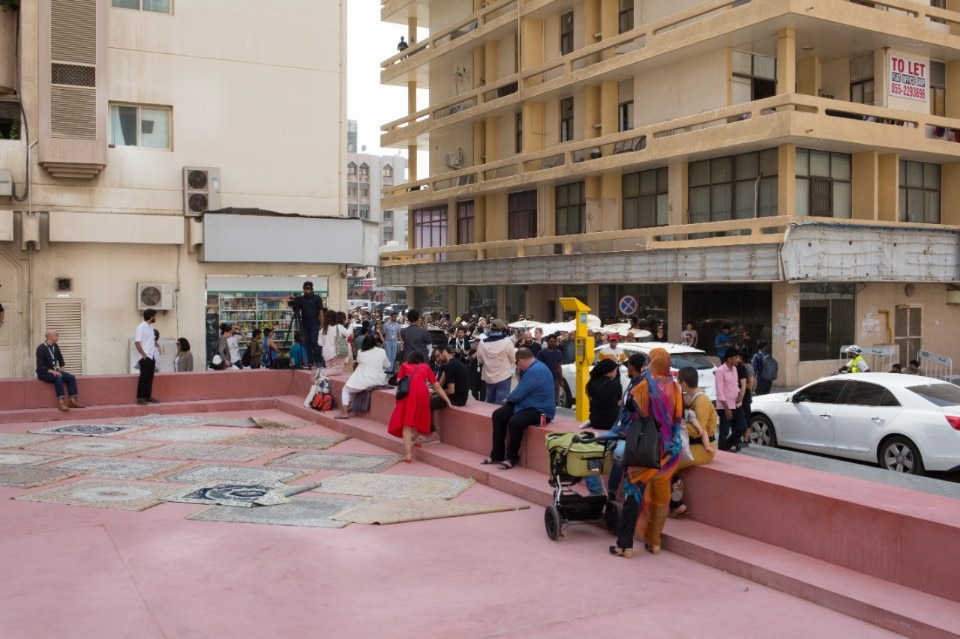
A number of works look at the use of land, and land rights. The Ngurrara Canvas II (1996), a vast artwork painted by 19 Aboriginal artists as oart of a native title claim on the Great Sandy Desert of northern Western Australia was presented at Al Mureijah Art Spaces. The restored 19th century compound surrounded by walls built from chunks of coral is among 25 buildings across Sharjah being preserved and used by Al Qasimi's art organisation.
Photography of the Atacama Lines, thousands of spectularly preserved geoglyphs made by nomads in the deserts of northern Chile, represent an effort by the local community to claim their land – and water resources – which are under theat by the Chilean government's support of lithium mining in the region.

- Title:
- Sharjah Architecture Triennale
- Curator:
- Adrian Lahoud
- Opening dates:
- 9 November 2019 – 8 February 2020
- Location:
- Various locations, Sharjah, UAE


